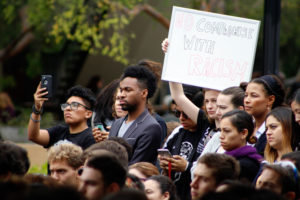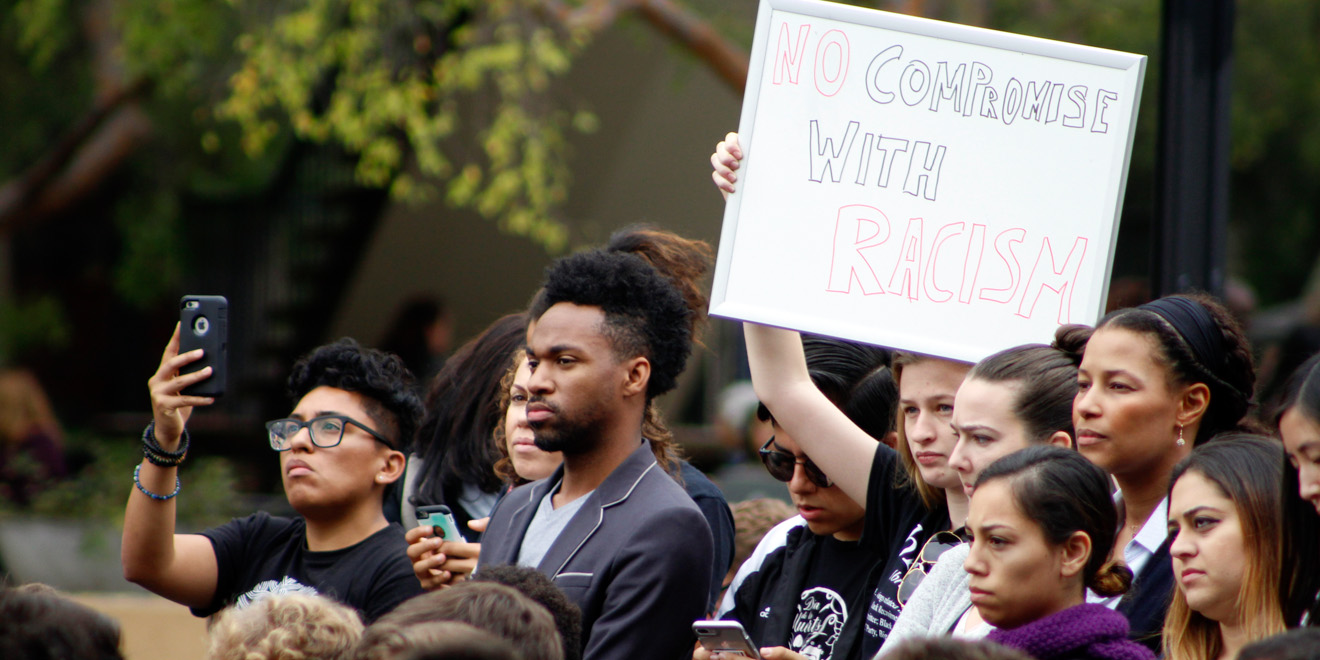
A group of Stanford students and faculty members has joined forces in an ongoing effort to make Stanford a safer place for undocumented immigrants. Galvanized by the election of President Donald Trump last November, student group Stanford Sanctuary Now (SSN) demanded that Stanford protect all students and staff at risk of deportation by keeping their immigration status private and providing them with legal assistance. In recent weeks, faculty members have also taken up SSN’s cause.
Newfound collaboration
Amid negotiations between the University administration and SSN, the Program in Writing and Rhetoric (PWR) issued a statement of support for the cause in January, followed by a letter signed by a group of 200 faculty members from various departments calling for more “assertive” response from the University.
The PWR letter demanded that Stanford avoid disclosing information to Immigration and Customs Enforcement about the immigration status of students, faculty or staff, provide financial and legal resources to individuals in danger of deportation, as well as explicitly adopt need-blind admissions for undocumented and international candidates.
Selby Schwartz, a PWR lecturer who spearheaded the collaboration with SSN, said the program’s support for the sanctuary campus movement was a logical extension of its “long political tradition of speaking in public.” Schwartz reiterated the program’s commitment to “supporting and affirming students, staff, their families and the broader community around Stanford and Palo Alto.”
According to SSN member Kari Barclay, a first-year Ph.D. candidate in theater and performance studies, the faculty initiatives bring much-needed solidarity and longevity for the sanctuary campus movement.
“Having [PWR faculty and instructors] support our demands, very specifically, has been great,” Barclay said. “We hope [their letter] can serve as a model for other departments, and even administrative offices, to sign onto.”
Barclay added that the 200 faculty members who signed the letter of support “very much saw the symbolism of the presented statements.”
Signed by faculty from multiple disciplines, the second letter presented a more emotional argument that contrasted with the legal specificity of the PWR letter, a contribution that SSN said added important rhetorical dimension to their platform. Faculty leader David Palumbo-Liu echoed the passionate tone of the letter.
“We cannot waste any time recognizing the kinds of threats the Trump administration presents,” Palumbo-Liu stated, adding that these issues “threaten both Stanford as an institution of higher education… and members of our community.”
The PWR department and the multidisciplinary faculty cohort joined SSN at their town hall meeting last week, which Barclay described as a visible step toward “building a coalition between different campus groups” and “putting these organizations in dialogue.” In the meeting, 115 student and faculty attendees discussed SSN’s platform, planned events in solidarity and prepared for future conversations with the administration.
University responses
The letters from students and faculty came in response to a perceived lack of specific policies that protect undocumented students at the University. While administrators have published a series of statements in response to mounting concern following the election and President Trump’s executive orders on immigration, SSN has sought more concrete proposals and action.
After the November election, the University published a statement reaffirming its support for the DREAM Act and DACA, two protective policies for undocumented students that Trump has threatened to abolish.
SSN said that they were pleased with the University’s tone in its statement, but had hoped to see more policy specifics. SSN provided more specific demands in late January, which first drew the support of instructors and faculty.
President Marc Tessier-Lavigne, along with then-Provost John Etchemendy Ph.D. ’82 and Provost Persis Drell, commented on these issues with a more detailed statement on Jan. 29. In the statement, they affirmed the University would use need-blind admissions for undocumented students, voiced support for federal legislation that would protect undocumented people and articulated core policy values of privacy and inclusivity.
“The University is deeply concerned about the potential impact to individual members of our community, and to our academic mission, of immigration restrictions,” wrote University spokesperson Lisa Lapin in an email to The Daily. She added that Stanford “has been actively engaged in addressing questions and providing resources to our community.”
The University’s statement was met with differing responses from the groups involved. Schwartz expressed optimism about the University’s stated goals, which she said was in line with her cause.
“I see a great deal of concern [from the University] about the effect of the executive orders and the possible intent to deport students,” Schwartz said.
Palumbo-Liu also commented that collaboration and cooperation with the University seemed within reach.
“I know the administration is doing… a lot of information-gathering to really see the dimensions of the problem, and so are our groups,” Palumbo-Liu said, stressing their collective need to “[work] out together the best ways to reach our common goals.”
However, members of SSN lamented that they have yet to see a detailed action plan from the University.
“The [University of California] system [president] Janet Napolitano [said] unflinchingly, ‘we are supporting our students,’” Barclay said. “Stanford said that, but there could be both improvements in policy and in tone.”
Barclay added that the latest statement has not fully addressed community members’ fears, especially those of campus workers.
Looking ahead
To bring about concrete policy outcomes, the sanctuary campus coalition aims to work with University administrators in continued negotiations. The coalition is currently preparing for a meeting with University administrators on Feb. 16. Barclay laid out various goals that SSN has for the meeting, the most pressing of which is communicating the longevity of their efforts.
“The challenge is going to be getting the University to see this as a long-term struggle — and a long-term collaboration — rather than a group of students who they can calm,” Barclay said. “There’s the image that we’re just a bunch of angry students who they can wait out.”
Barclay added that participation by faculty members, who are able to remain at Stanford and support the cause for the long-term, help SSN communicate the seriousness of their message.
“We have more people behind us than ever,” Barclay said. “And we’re not going away anytime soon.”
Contact Katie Keller at ktkeller ‘at’ stanford.edu.
